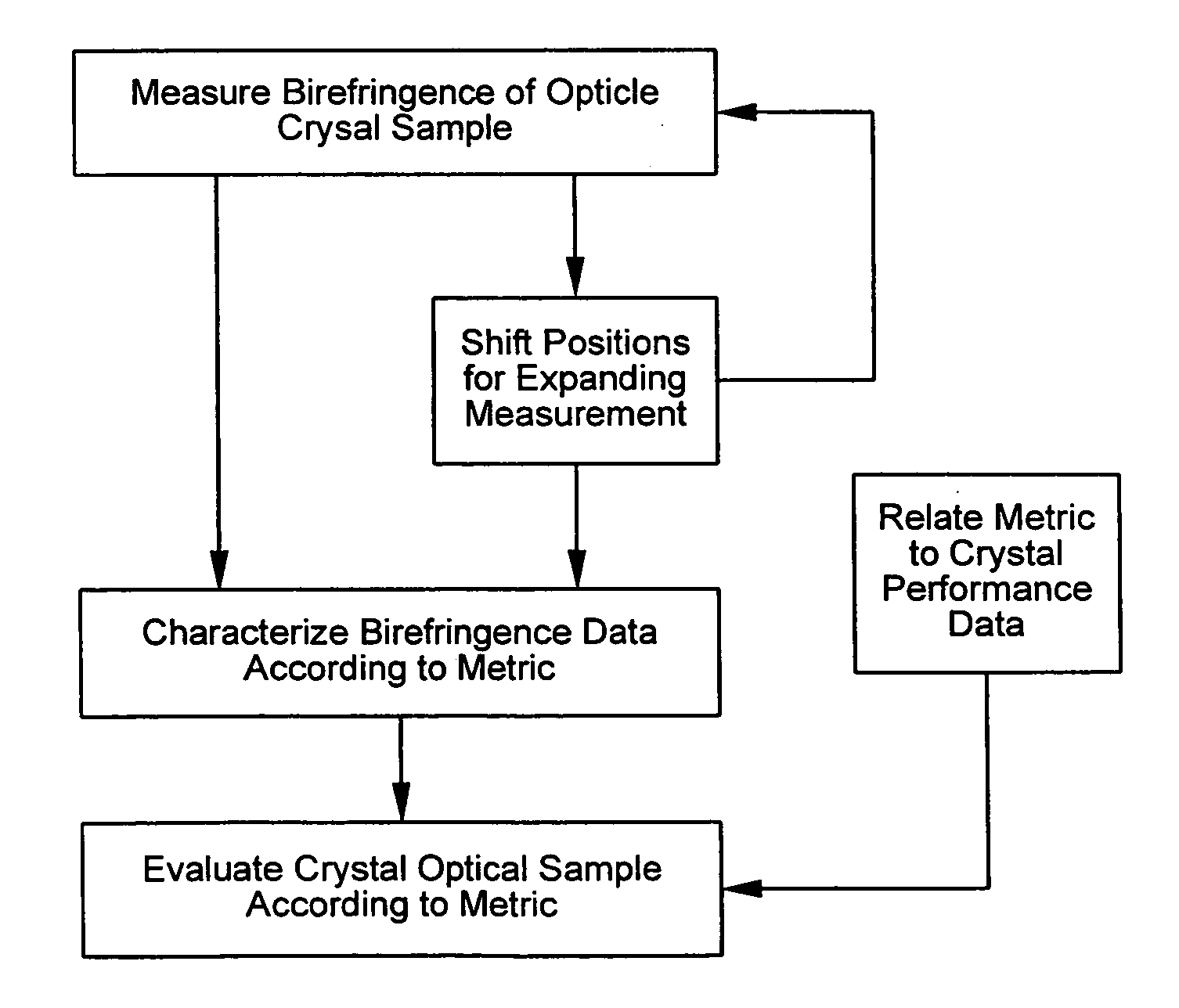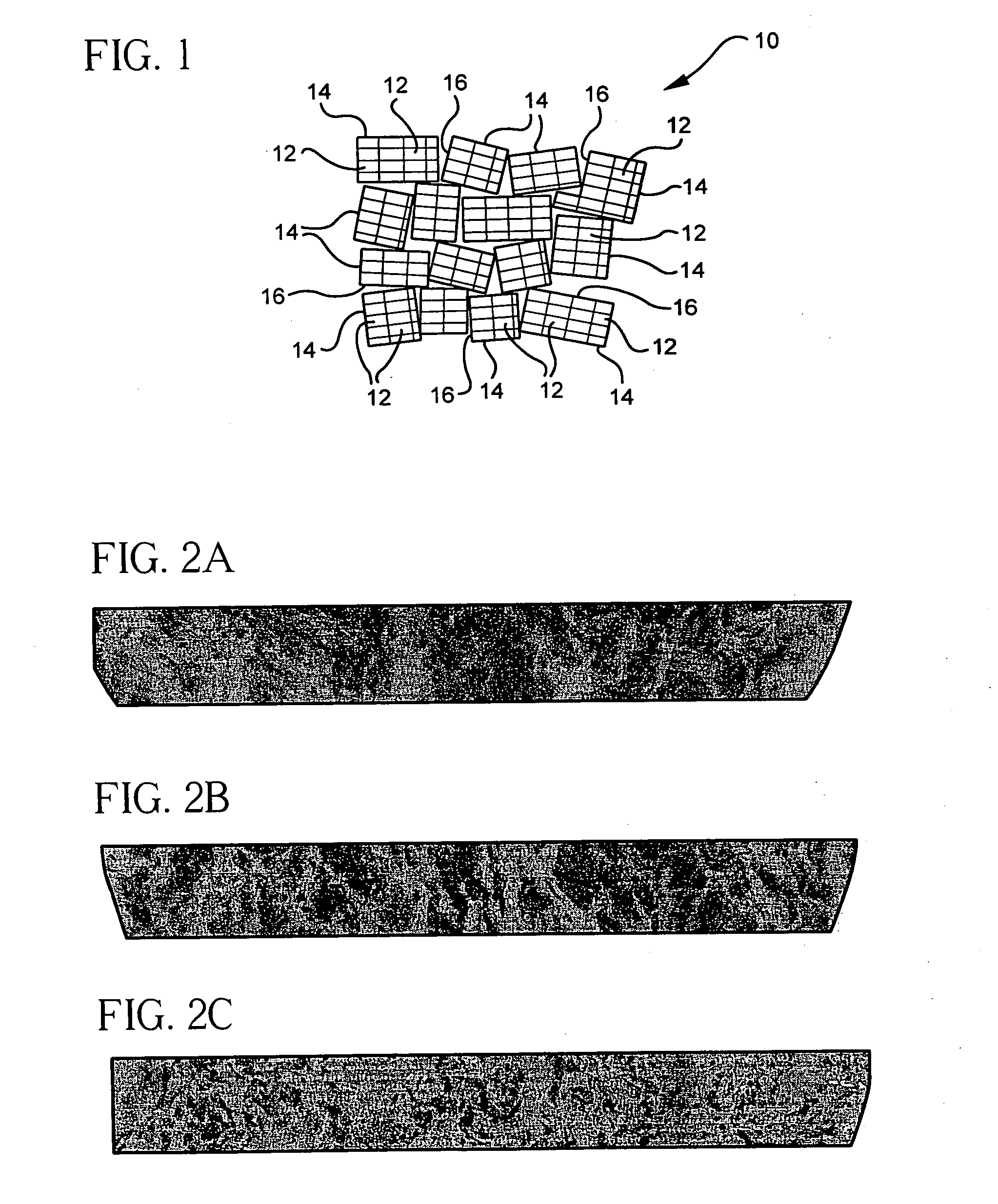Mosaic quantification by birefringence measurement
a birefringence and crystal structure technology, applied in the measurement of optical radiation, instruments, light polarisation, etc., can solve the problems of crystal structure, affecting the long-range cell order is a grain boundary, and degrading the performance of crystal optical materials, and achieve high accuracy
- Summary
- Abstract
- Description
- Claims
- Application Information
AI Technical Summary
Benefits of technology
Problems solved by technology
Method used
Image
Examples
Embodiment Construction
[0031]In a schematic representation of a mosaic structure of a single crystal grain 10 as shown in FIG. 1, dislocations between some of the unit cells 12 divide the crystal grain 10 into an assembly of subgrains 14 that slightly misalign groups of unit cells 12 with respect to one another. The misalignments shown in FIG. 1 are greatly exaggerated to distinguish boundaries 16 where the dislocations occur from regions within the subgrains 14 where the periodic crystal order among the unit cells 12 is maintained. The misaligned subgrains 14 resemble the tiles of a mosaic, and the arrangement of the subgrains 14 and particularly the network of their boundaries 16 are referred to as mosaic.
[0032]As a measure of local defects in the crystal structure, a high level of mosaic is generally undesirable for optically transmissive materials. For example, a relationship has been found between mosaic level and lifetime issues (e.g., the service life) of optical crystal samples as well as other is...
PUM
| Property | Measurement | Unit |
|---|---|---|
| wavelength | aaaaa | aaaaa |
| lattice | aaaaa | aaaaa |
| birefringence | aaaaa | aaaaa |
Abstract
Description
Claims
Application Information
 Login to View More
Login to View More - R&D
- Intellectual Property
- Life Sciences
- Materials
- Tech Scout
- Unparalleled Data Quality
- Higher Quality Content
- 60% Fewer Hallucinations
Browse by: Latest US Patents, China's latest patents, Technical Efficacy Thesaurus, Application Domain, Technology Topic, Popular Technical Reports.
© 2025 PatSnap. All rights reserved.Legal|Privacy policy|Modern Slavery Act Transparency Statement|Sitemap|About US| Contact US: help@patsnap.com



